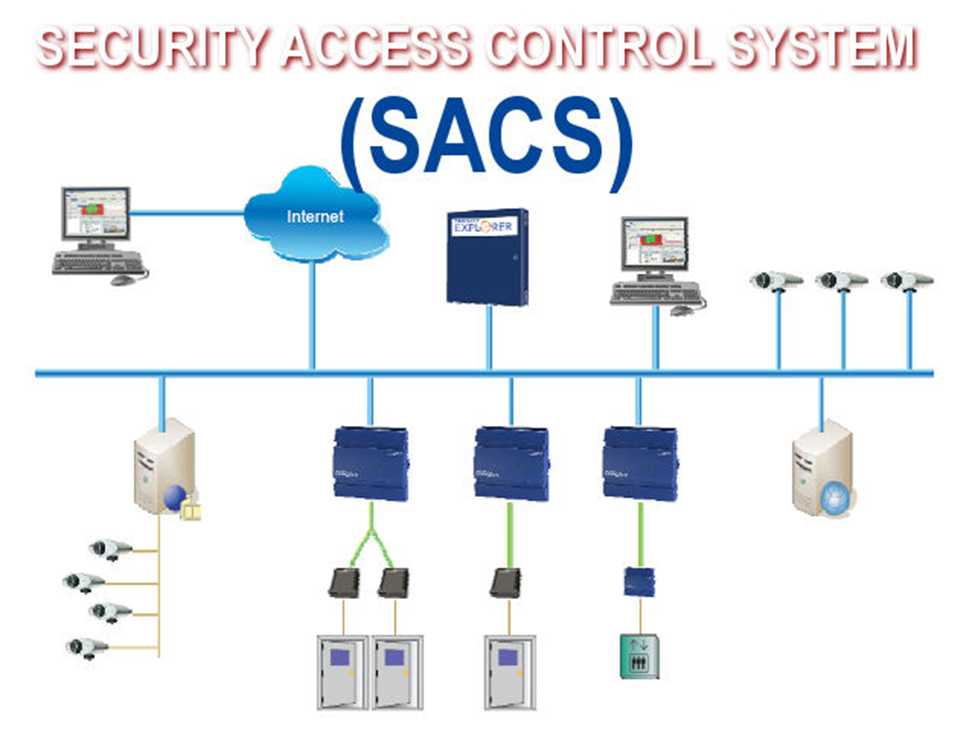Maintaining security in largely public institutions is about controlling access and assuring an appropriate balance between the physical security and life-safety of their constituents and guests. With the exception of acute-care hospitals where degrees of life-safety are uniquely exacting, for most institutional environments, the question of life-safety is largely confined to “managing exceptions” and in monitoring the facility’s emergency systems and controls. That is, for educational, large commercial buildings and residential facilities, access protection takes place in a context of monitoring authorized traffic, in which security is about managing rosters and preserving of freedom of movement throughout virtually the entire campus. That said, from the life-safety perspective, it is also importantly about assuring the easy, safe and rapid evacuation of the facility in the event of emergency.

Achieving this balance between protection and freedom requires making sure that there is successful integration between the technologies controlling and monitoring access. It includes combining unobtrusive video surveillance of traffic at key access points with “intelligent” door locking hardware so that the needs of staff as well as those of a heterogeneous resident population (in environment like schools or universities) can be addressed in a manner consistent with an “open and accessible” social environment. Hence, it requires a system equipped to provide a manageable system of access control—wherever and especially whenever it’s needed and designed to promote exception management capable of enforcing safety while protecting privacy and the right to reasonable access.
Because safety is about culture as much as ubiquitous monitoring, it’s especially valuable to educate residents as well as staff about smart ways to assure personal safety and security in different areas of a given campus, regardless of time of day. On one hand, for example, it’s a given that science buildings and laboratories require substantially higher levels of potential risk with respect to the presence of costly and sophisticated equipment, potentially hazardous materials and supplies that may require scrupulous control and management scrutiny. Whereas in the more “open” spaces in public residence halls and general classrooms, and including student cultural centers and libraries, etc. very different and far less obvious challenges emerge. These areas are heavily trafficked at nearly all hours and hence demand a security presence that calls for highly flexible, close to 24/7 scrutiny so as to address challenges in protecting property and the physical safety of constituents.
In many cases, sound administration is less a matter of having the latest technology than making sure that both residents and staff are educated and informed about using key-cards, etc. and especially that they understand the “house rules” and have been properly indoctrinated with respect to scheduling and identification protocols as well as basic courtesy in a diverse community environment.
Meanwhile, from an access control standpoint, the need for balance in most cases involves assuring appropriate, more or less seamless freedom of movement while achieving optimal physical safety of the population. The last thing you want in a higher education environment is for the environment to “feel like” a jail.
And yet, the needs of administrators for appropriate flexibility at the technical level is not to be under estimated, just as clear rules for managing hours of operation and schedules need to be balanced by the availability of equipment that is both adaptive within reasonable standards of convenience to members while enabling timely management without requiring expensive training by reasonably skilled individuals.
Among the frequent scenarios involving “abuse” are hallways where exterior doors may have been purposely left ajar by a resident who wanted to “simplify” a late hour assignation. Intelligent access control equipment: sensors and cameras tethered to doors and card-readers that can locate outliers, as well as “qualified” residents and staff people, become indispensable for campus security where managing routine and not so routine access by those authorized to be there and otherwise is a necessity of alert and ultimately successful security control.
The complexity of managing security on an urban university campus, where a demand for flexibility and freedom of movement encouraging the free exchange of ideas and information necessary to achieving and maintaining the highest standards of academic freedom and performance, highlights the demand for multi-dimensional security operating on several channels including advanced roster management with robust access privilege allocation which is necessary in campus facilities operating on schedules close to 24/7. While it’s never going to be ideal, campus buildings outfitted with video-tethered doors with card access tied to staff and enrollment databases can monitor and manage risk while avoiding a heavy handed and restrictive campus climate.